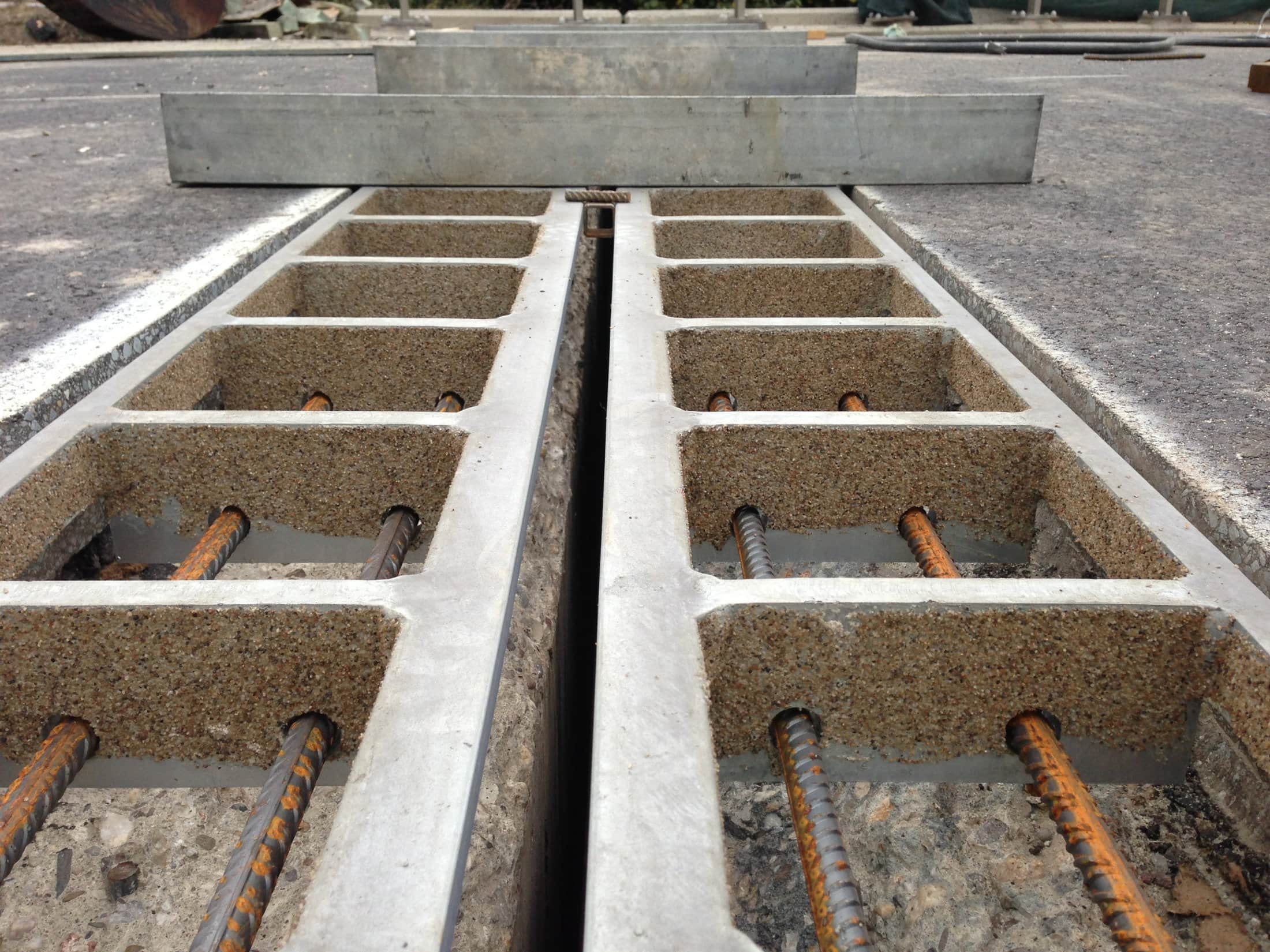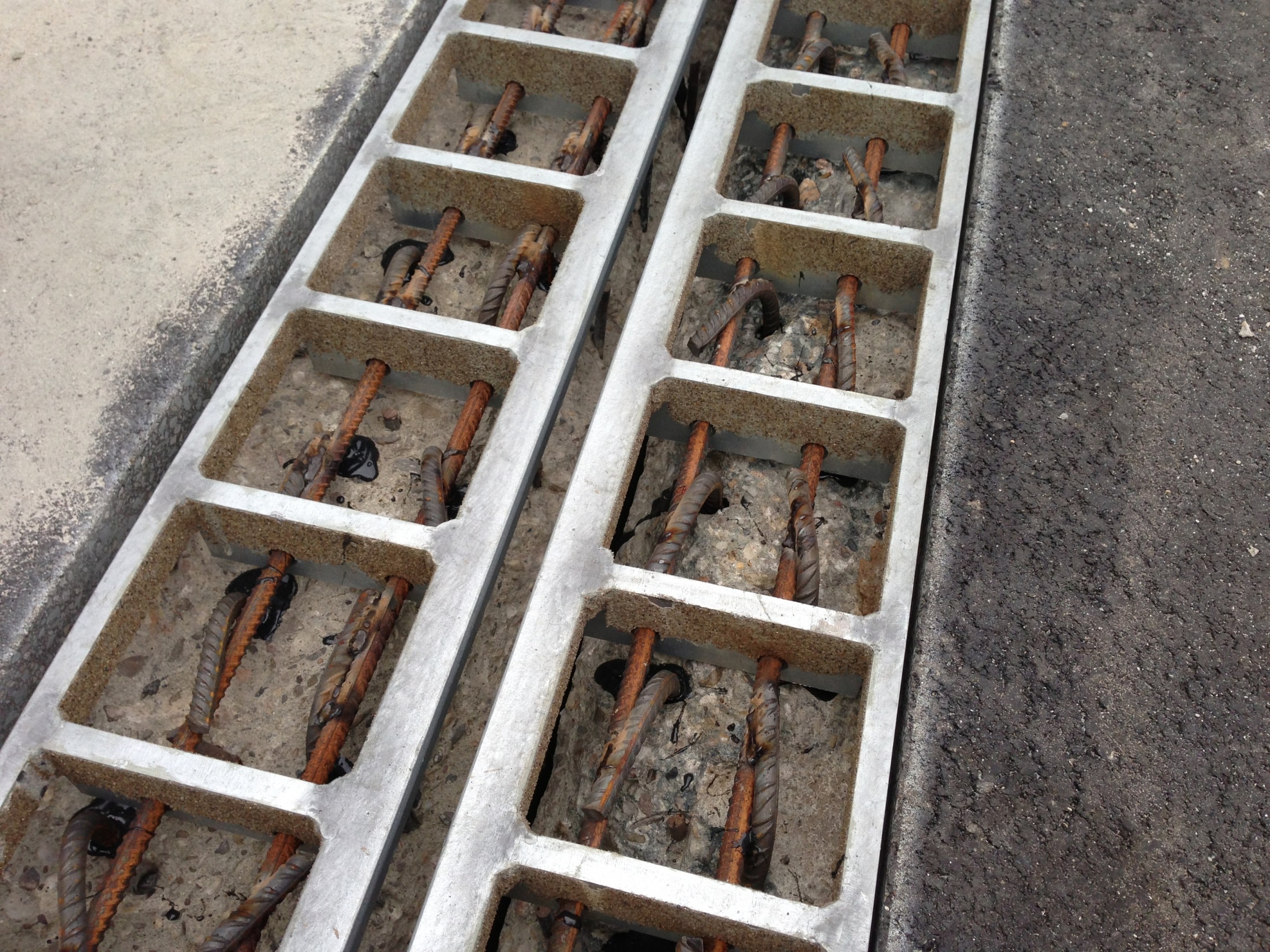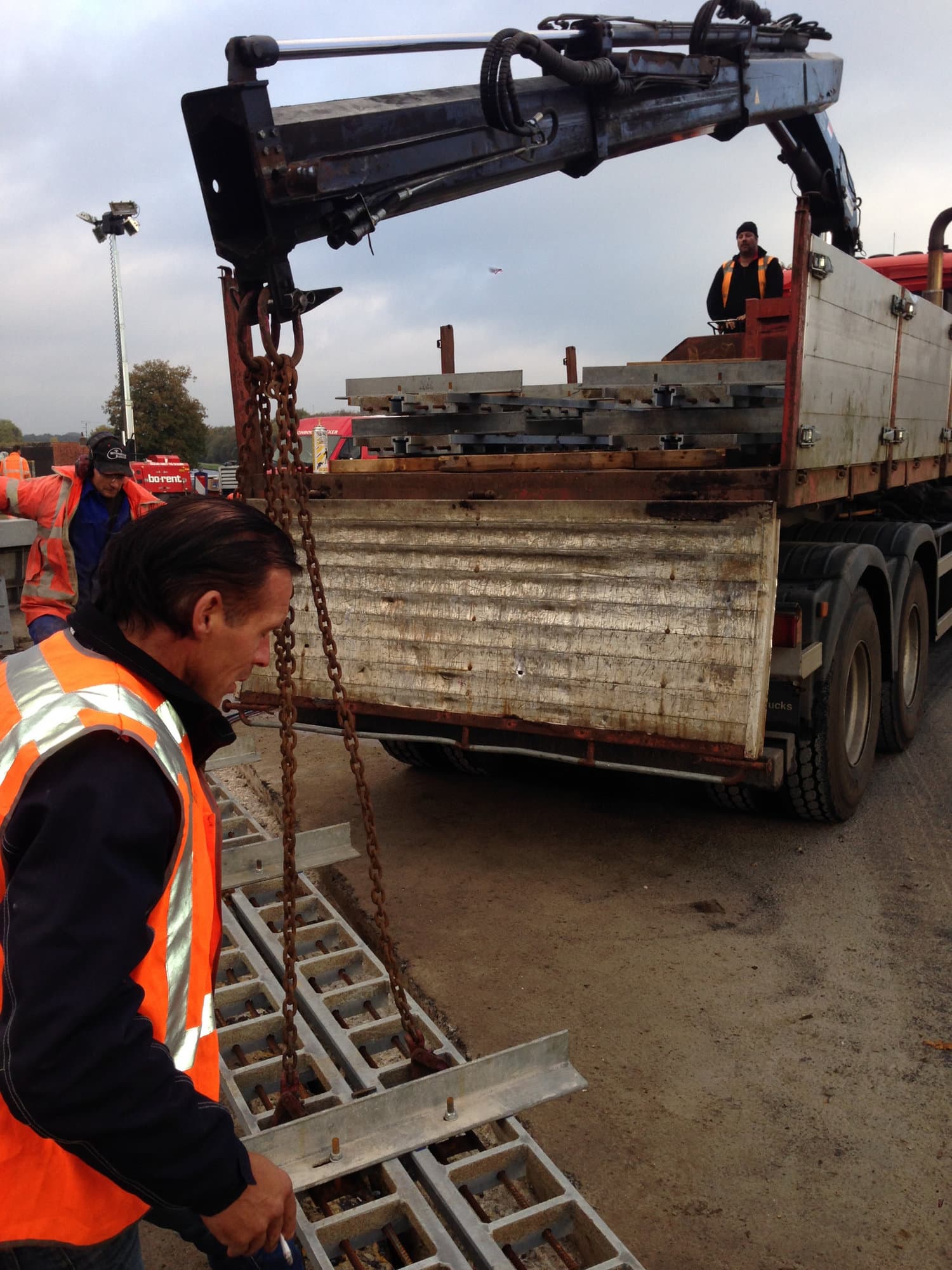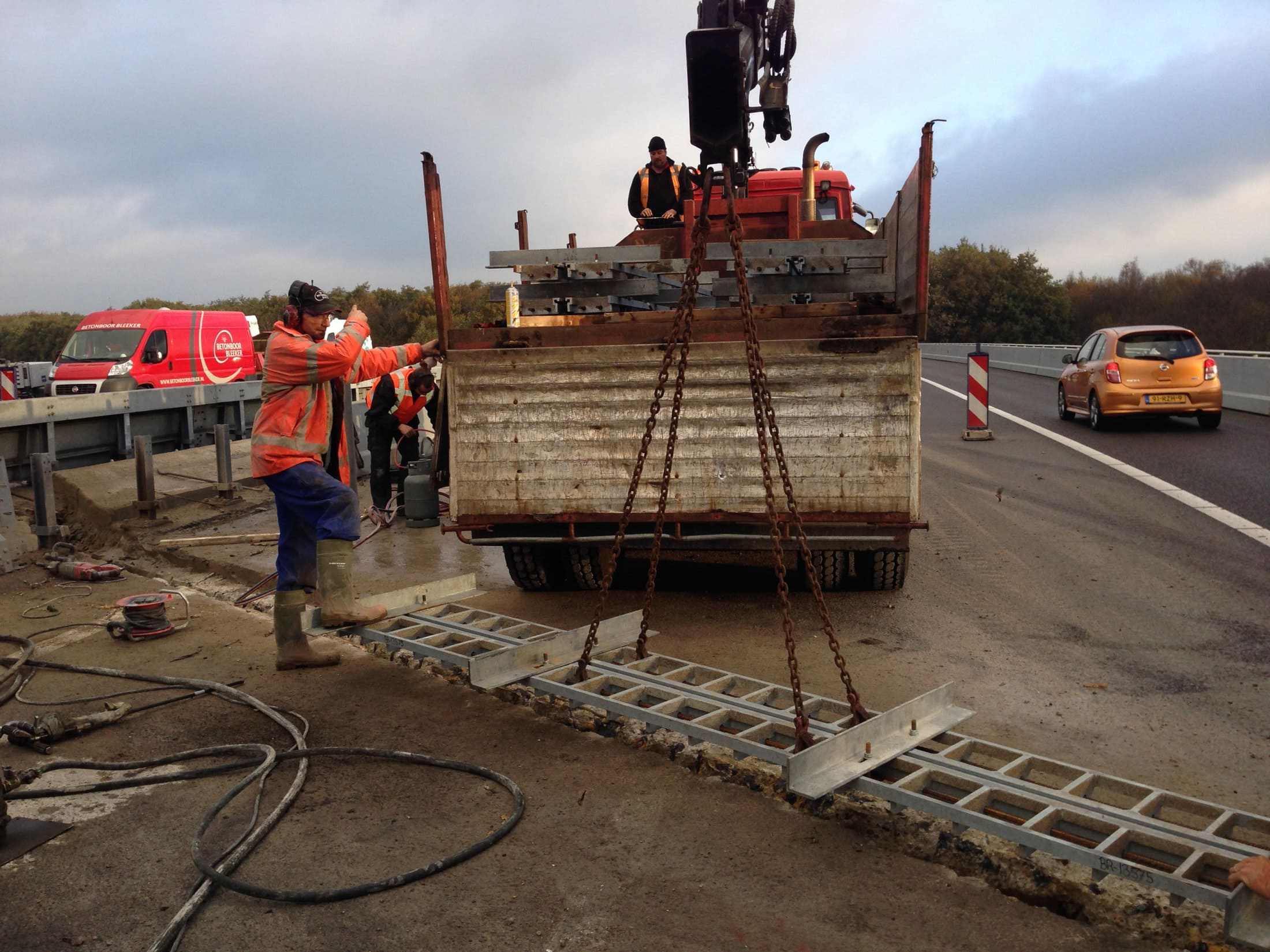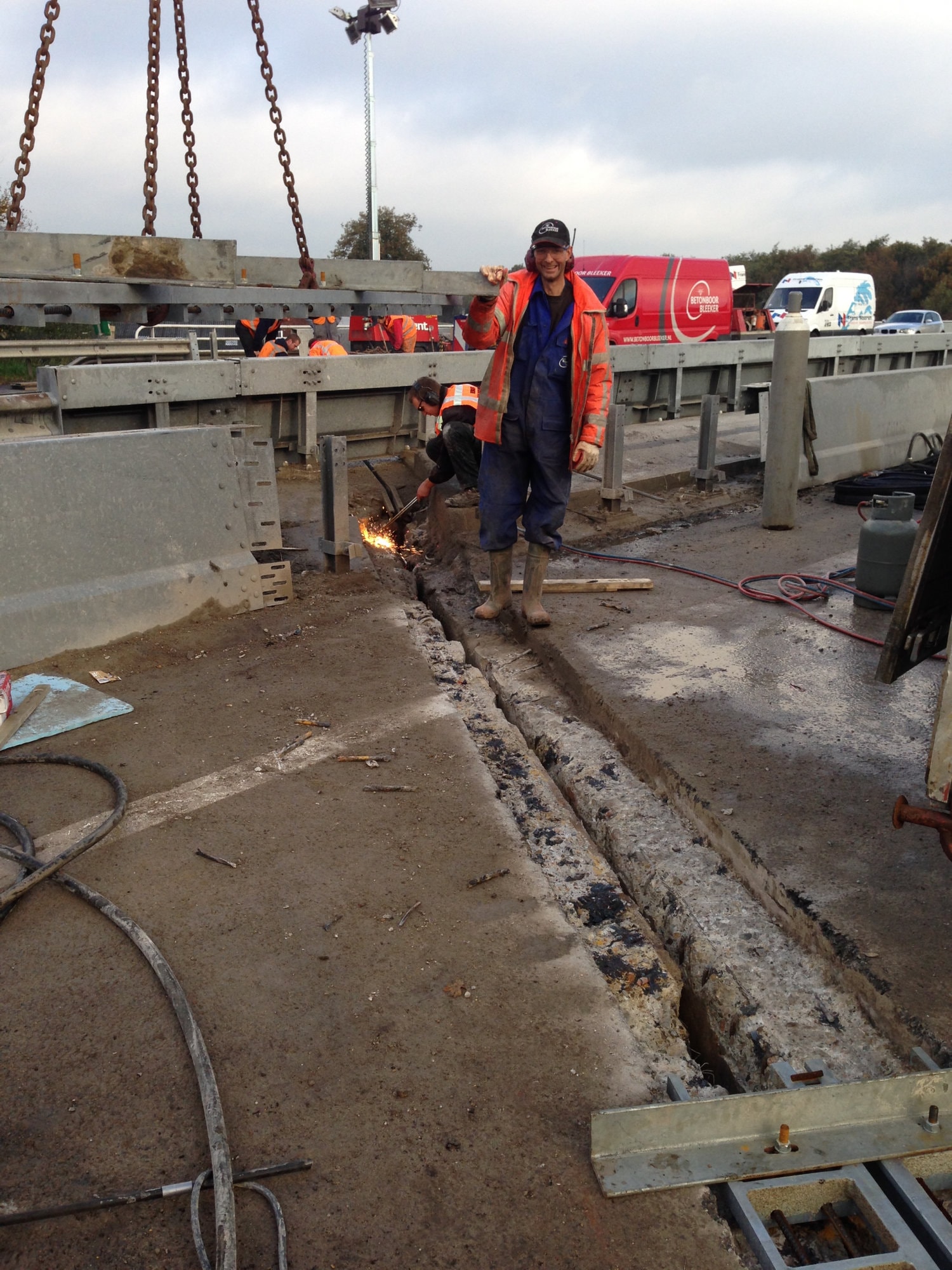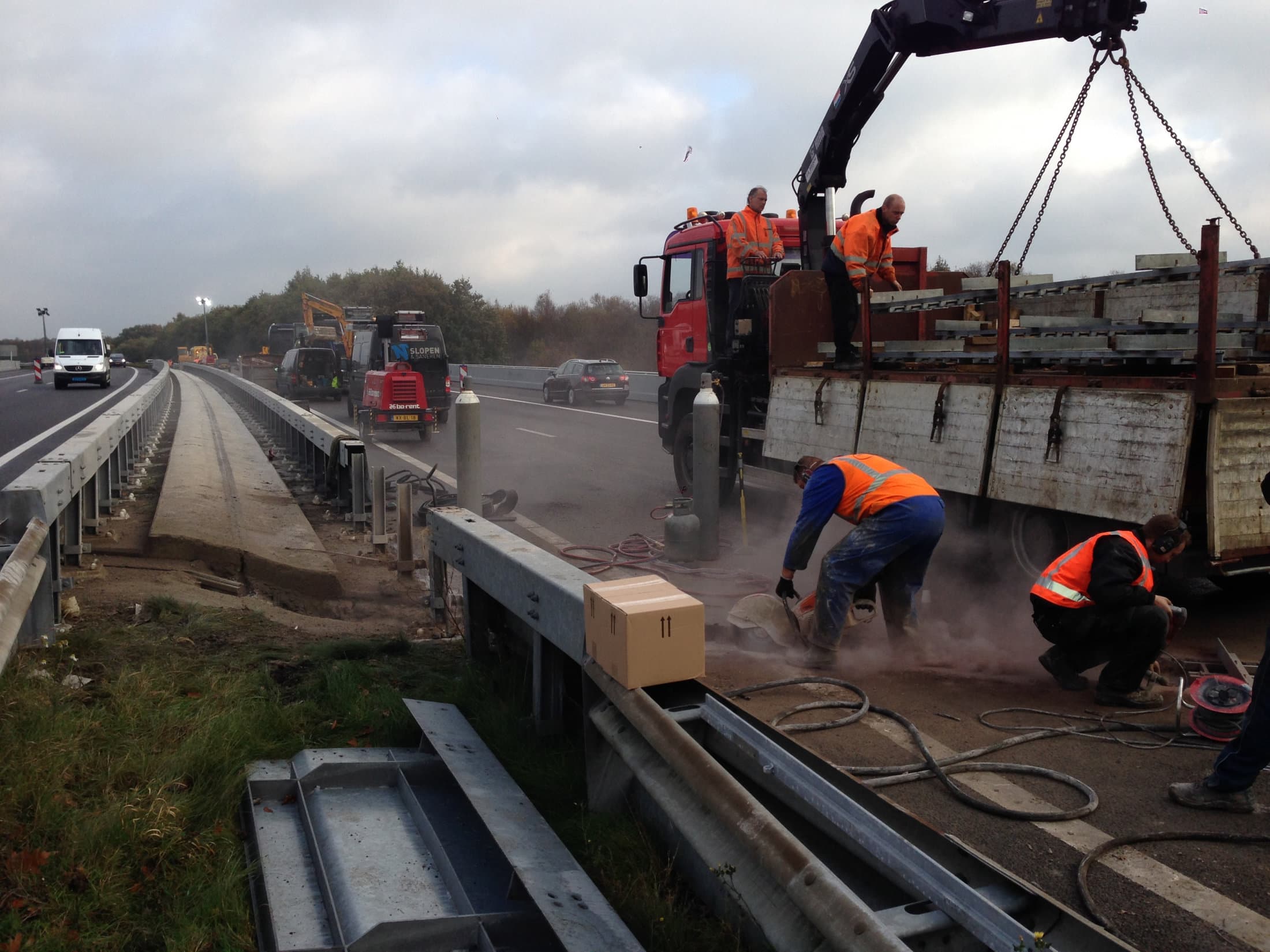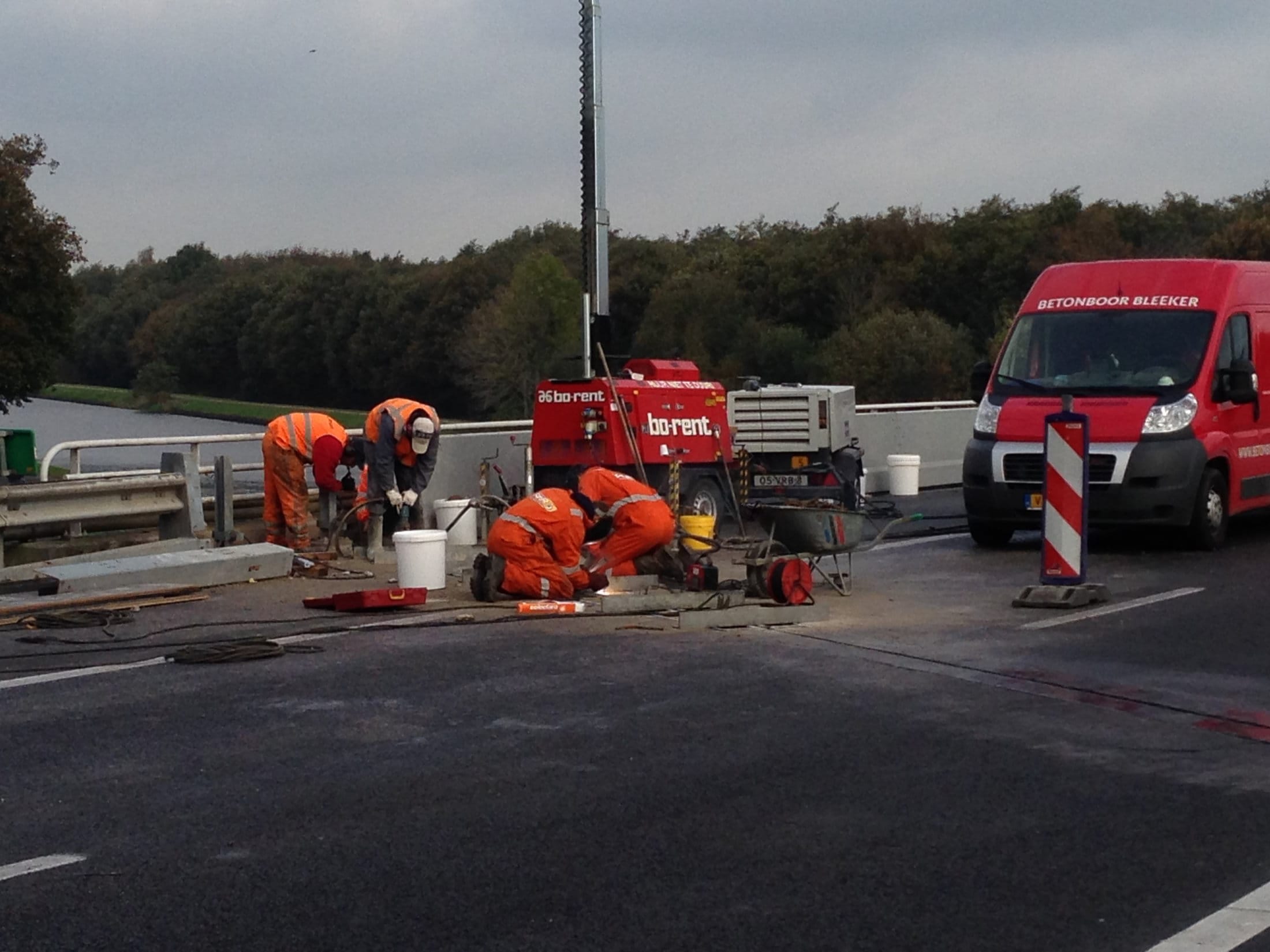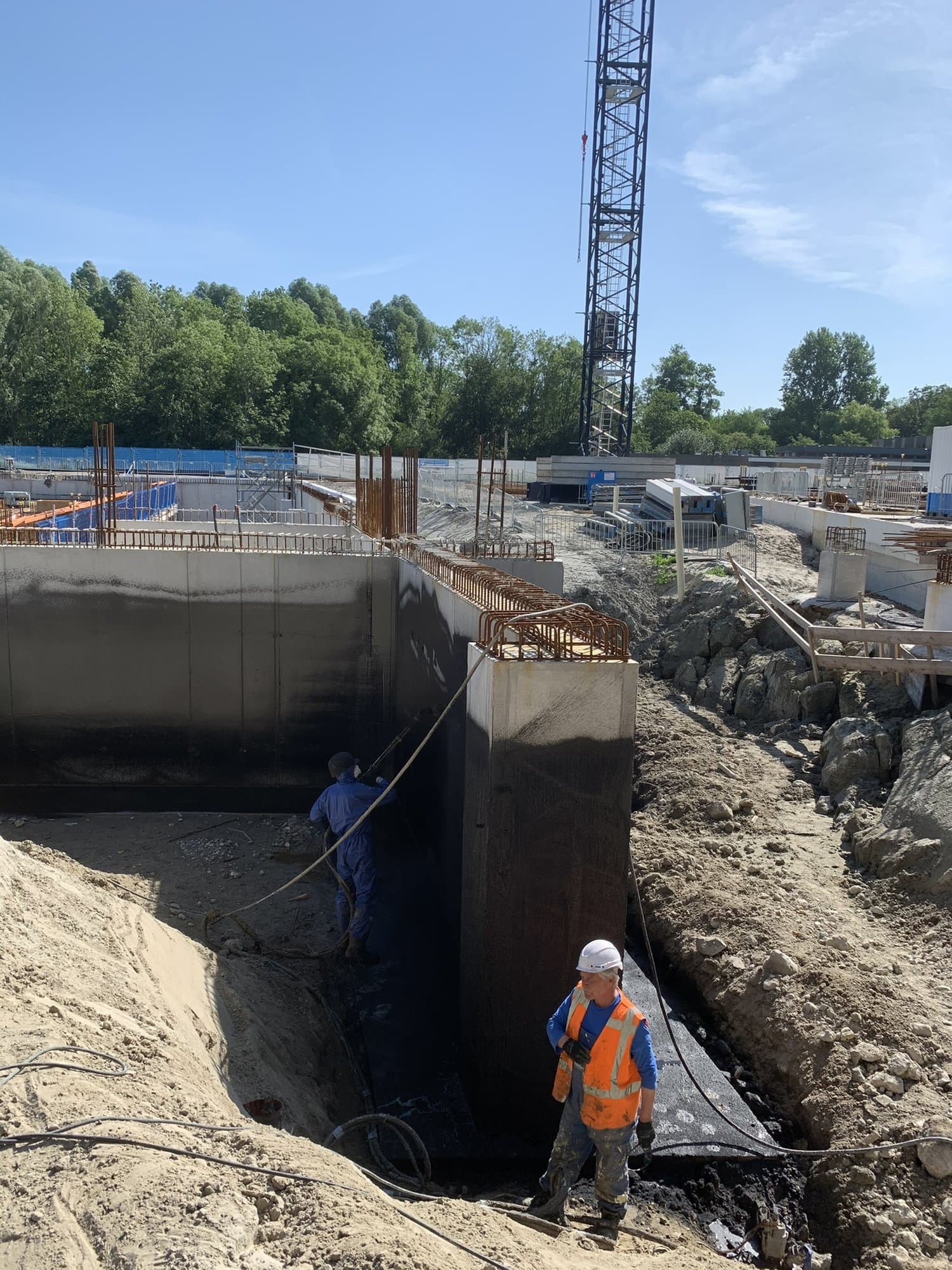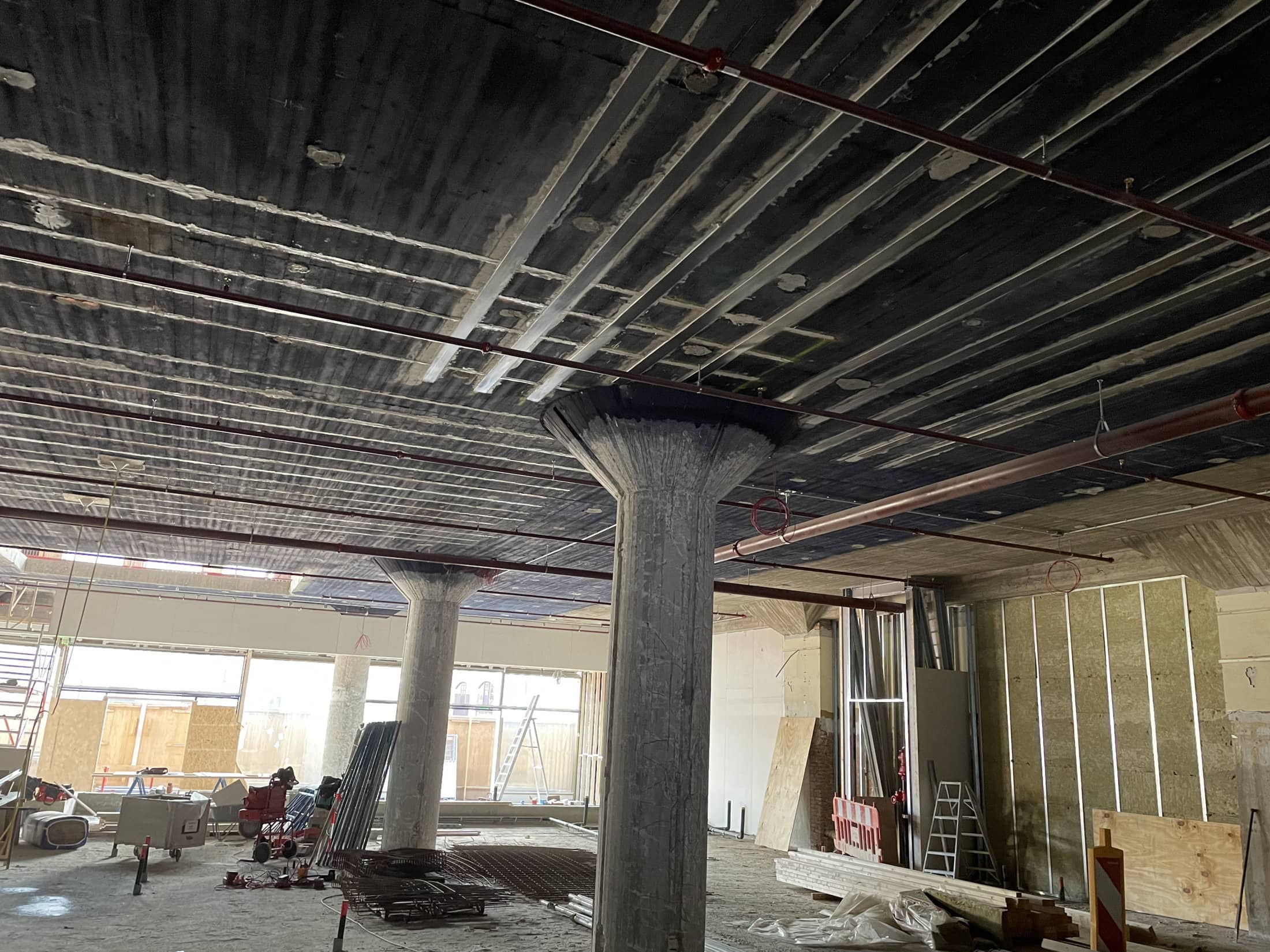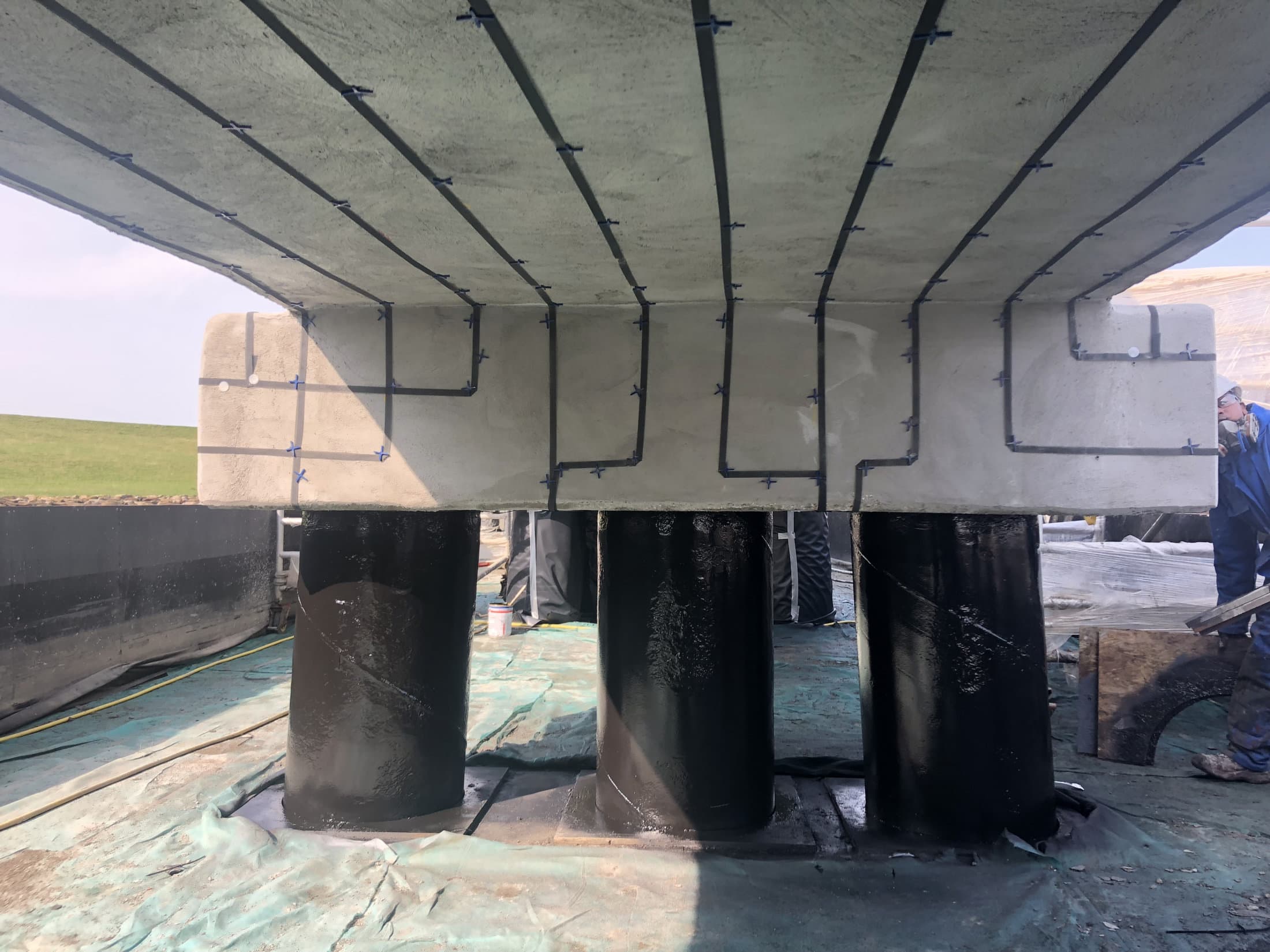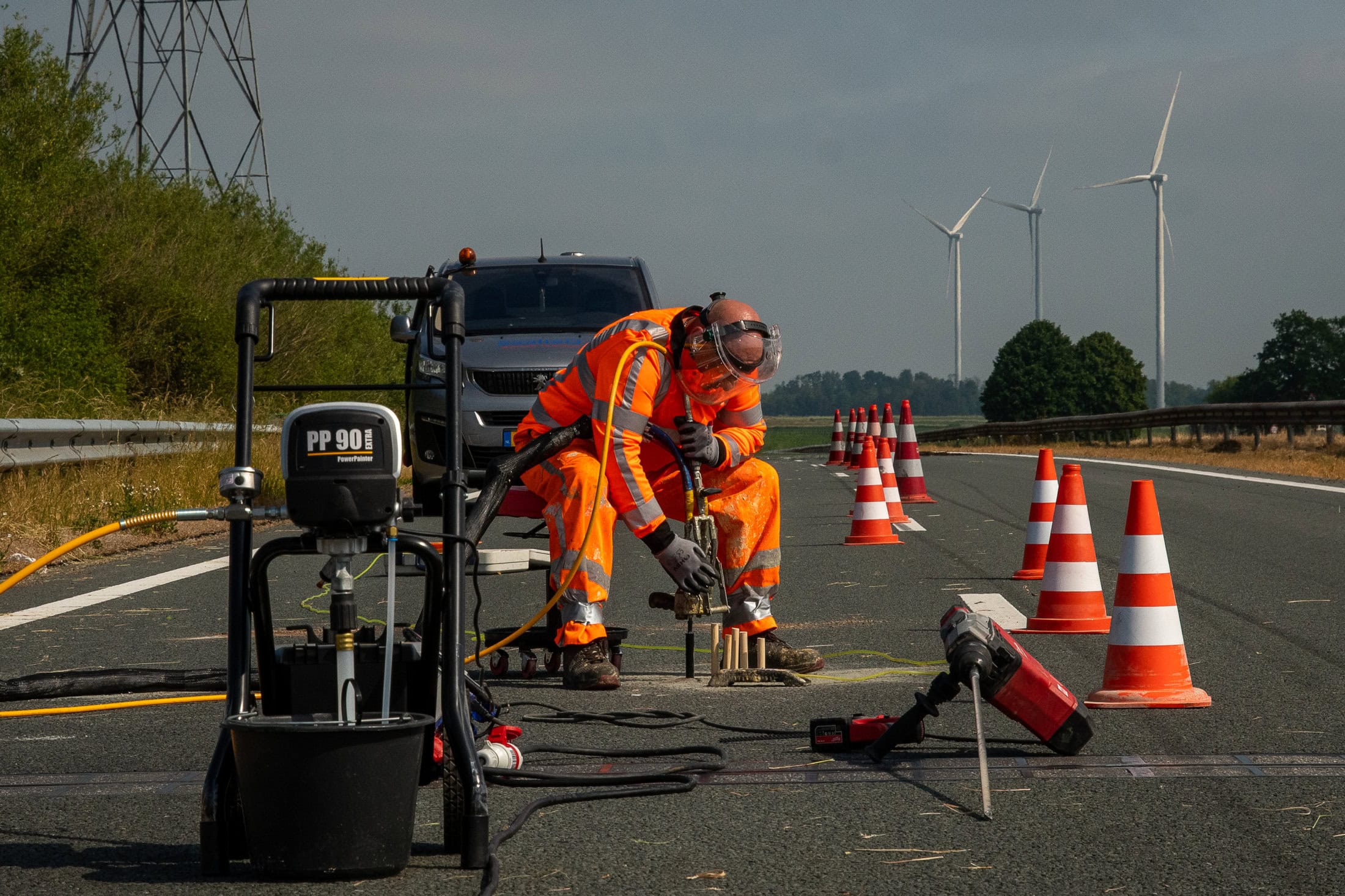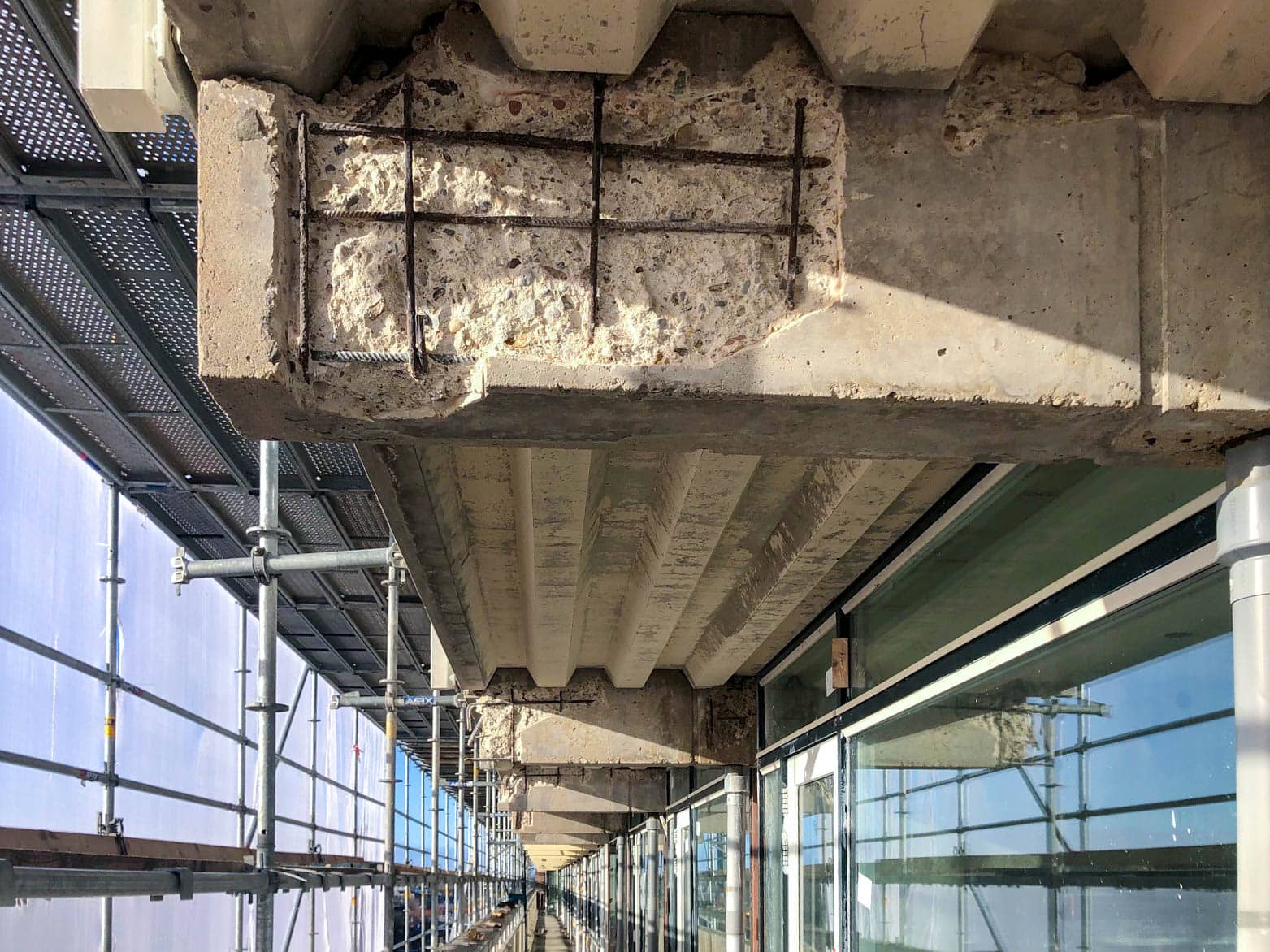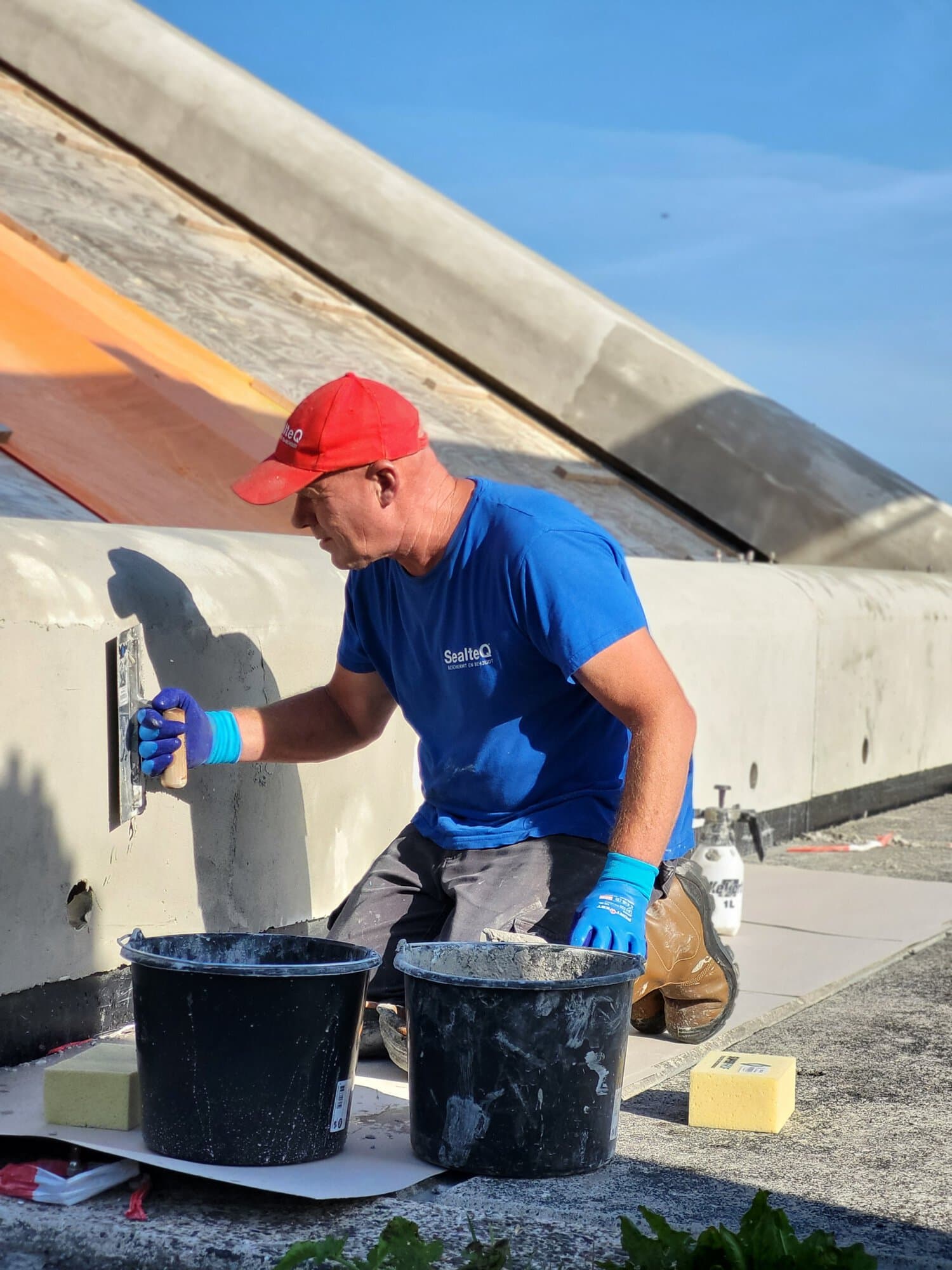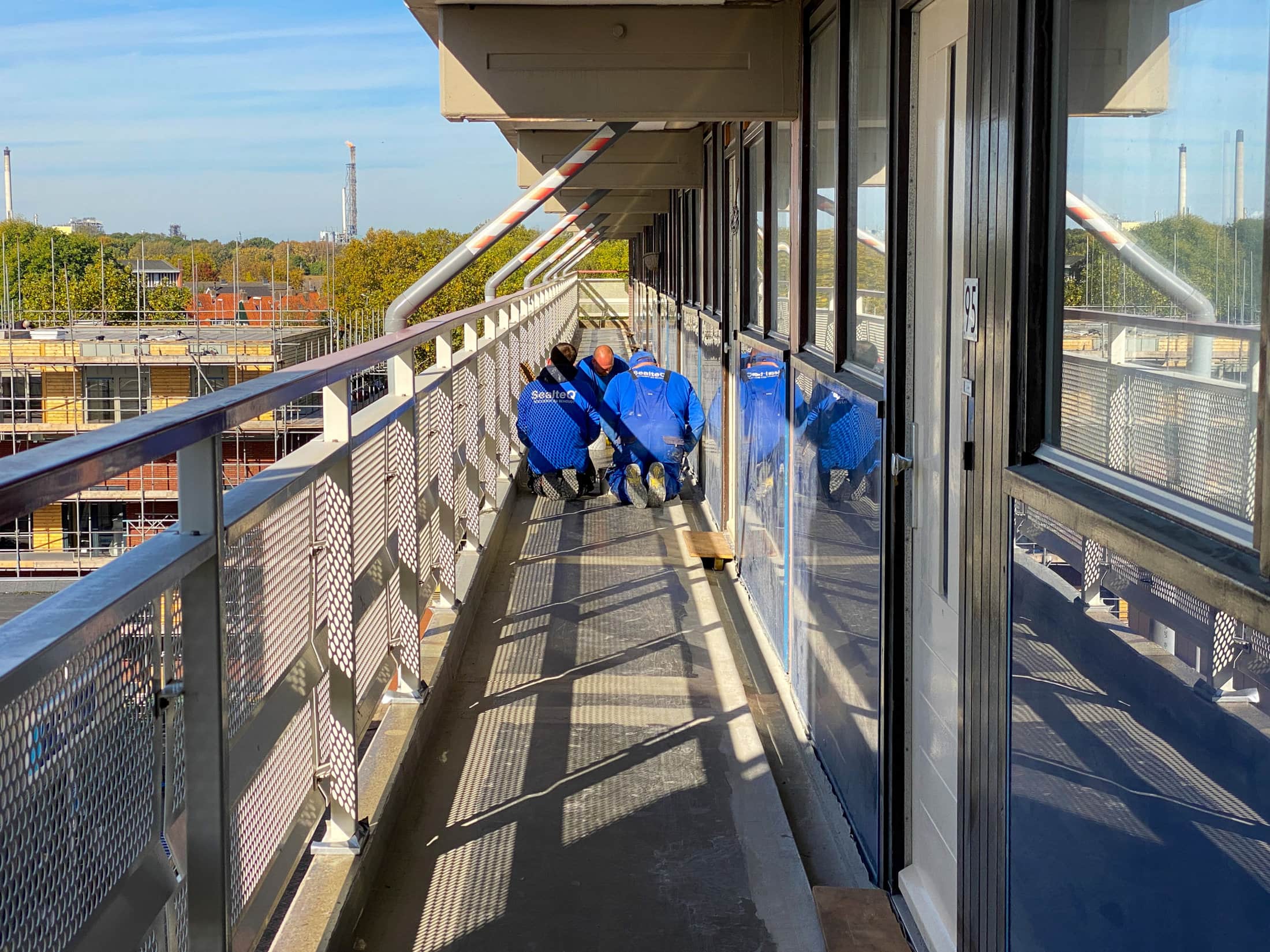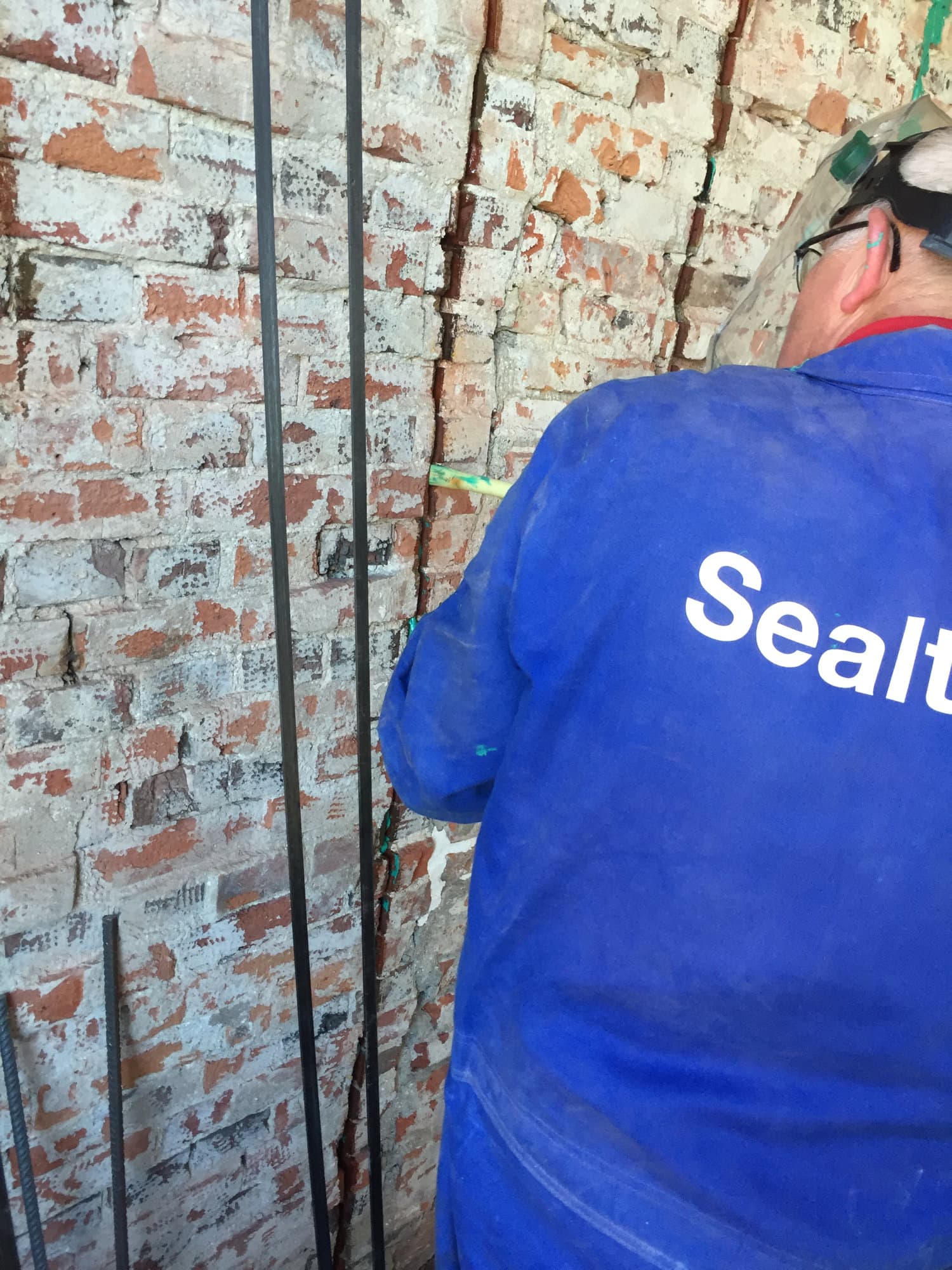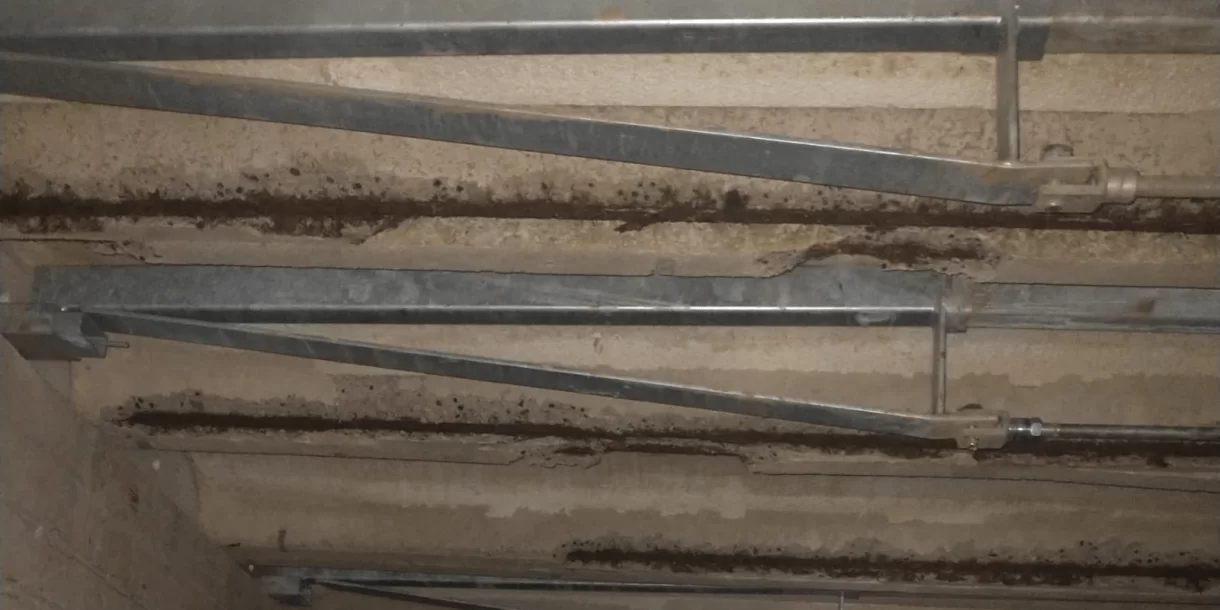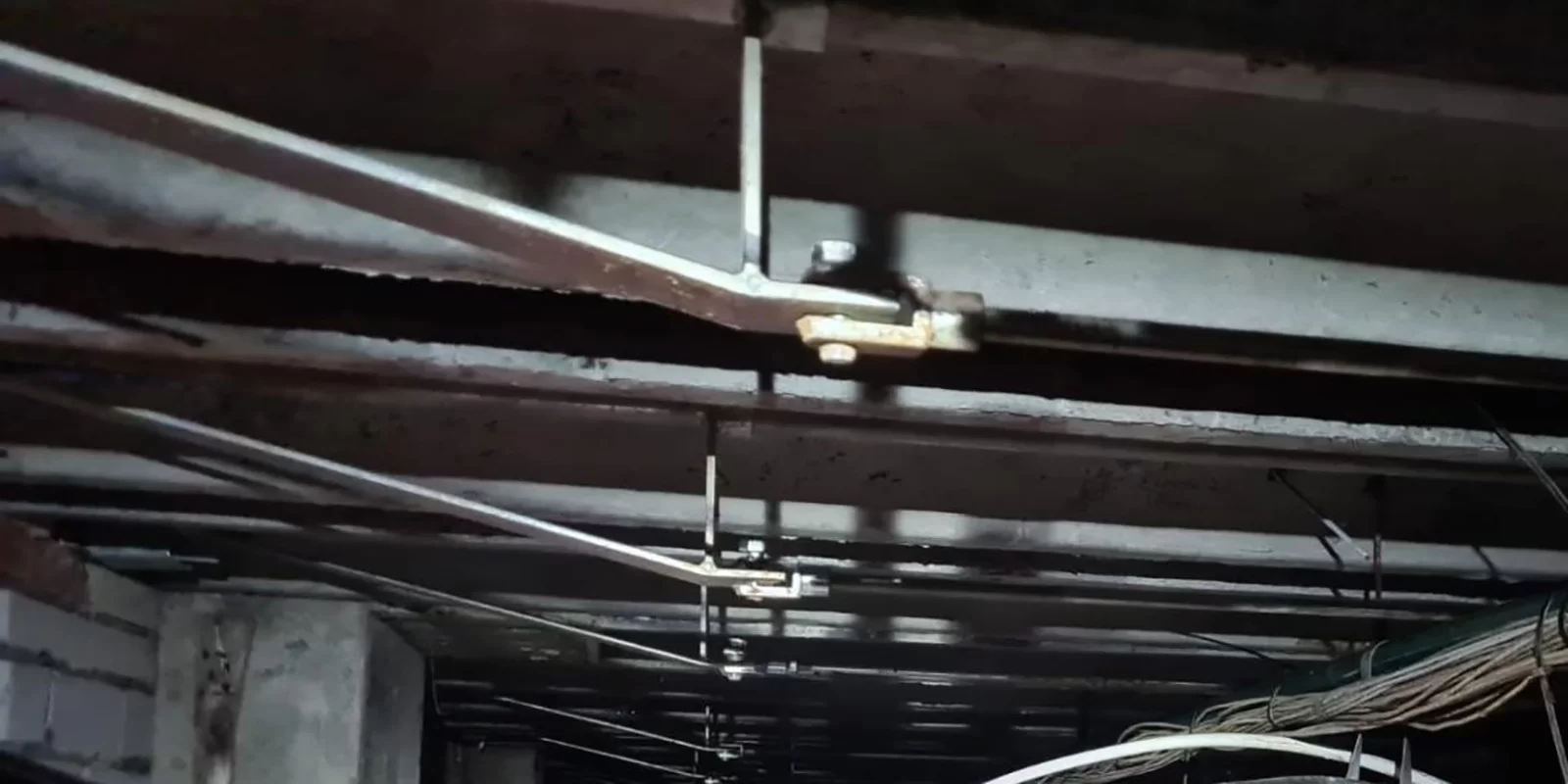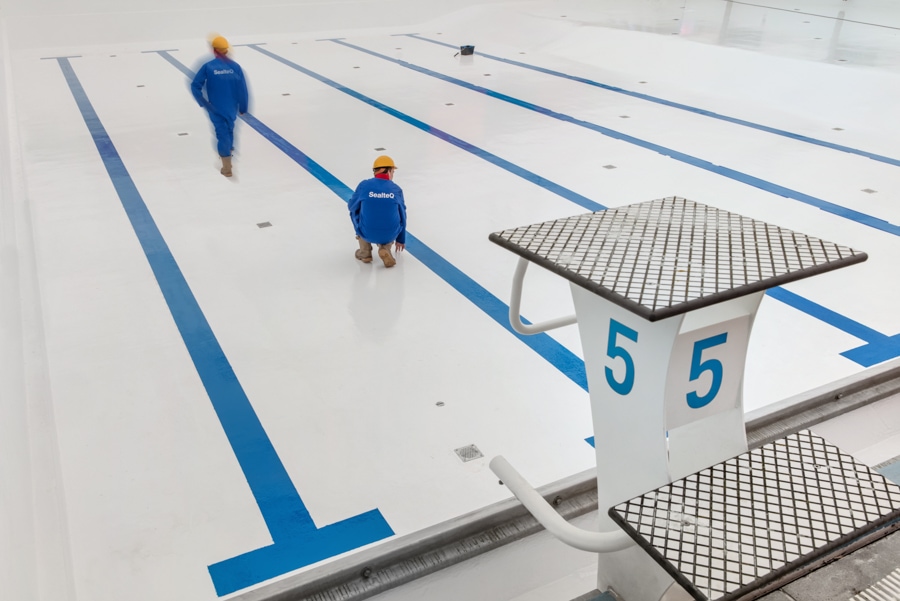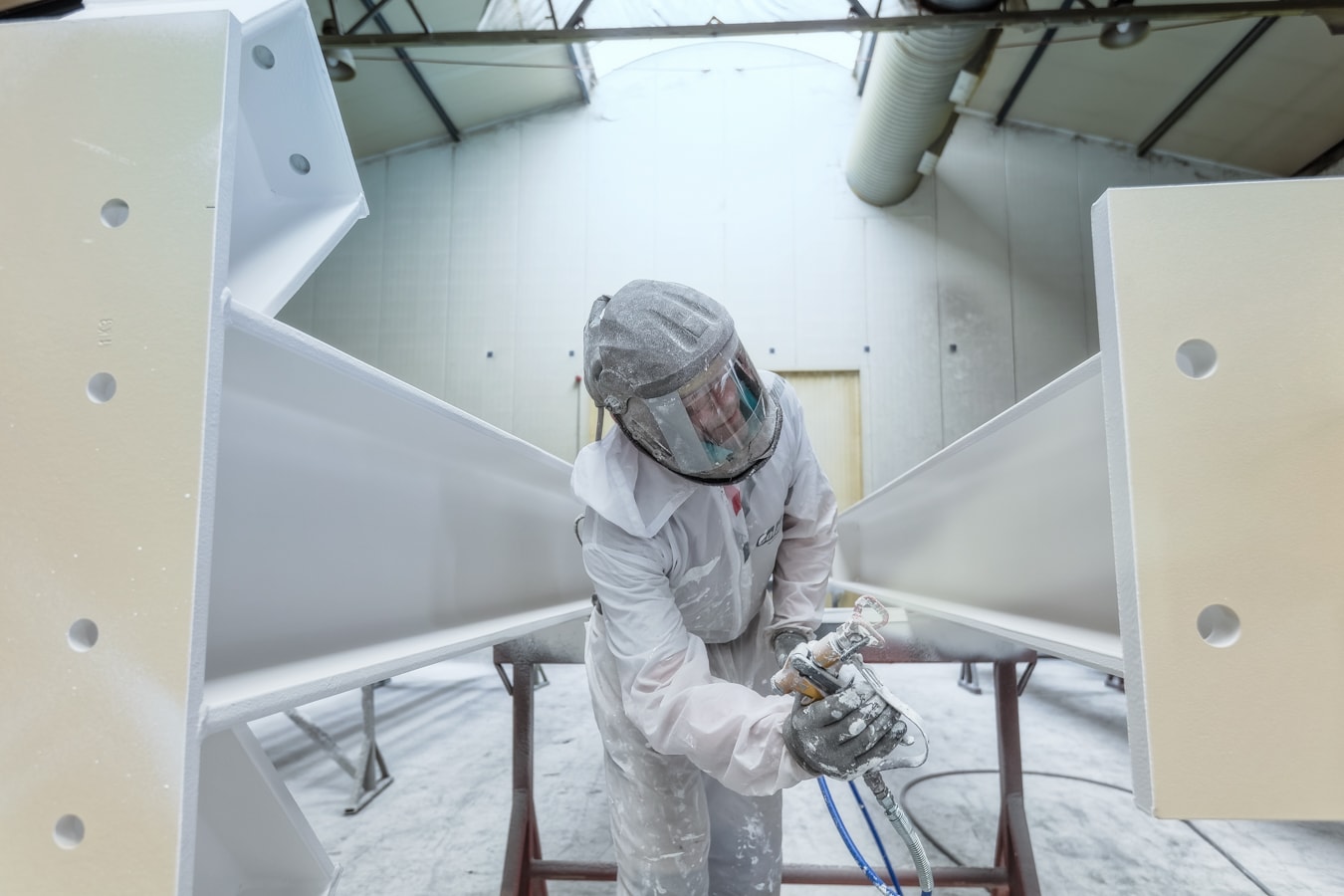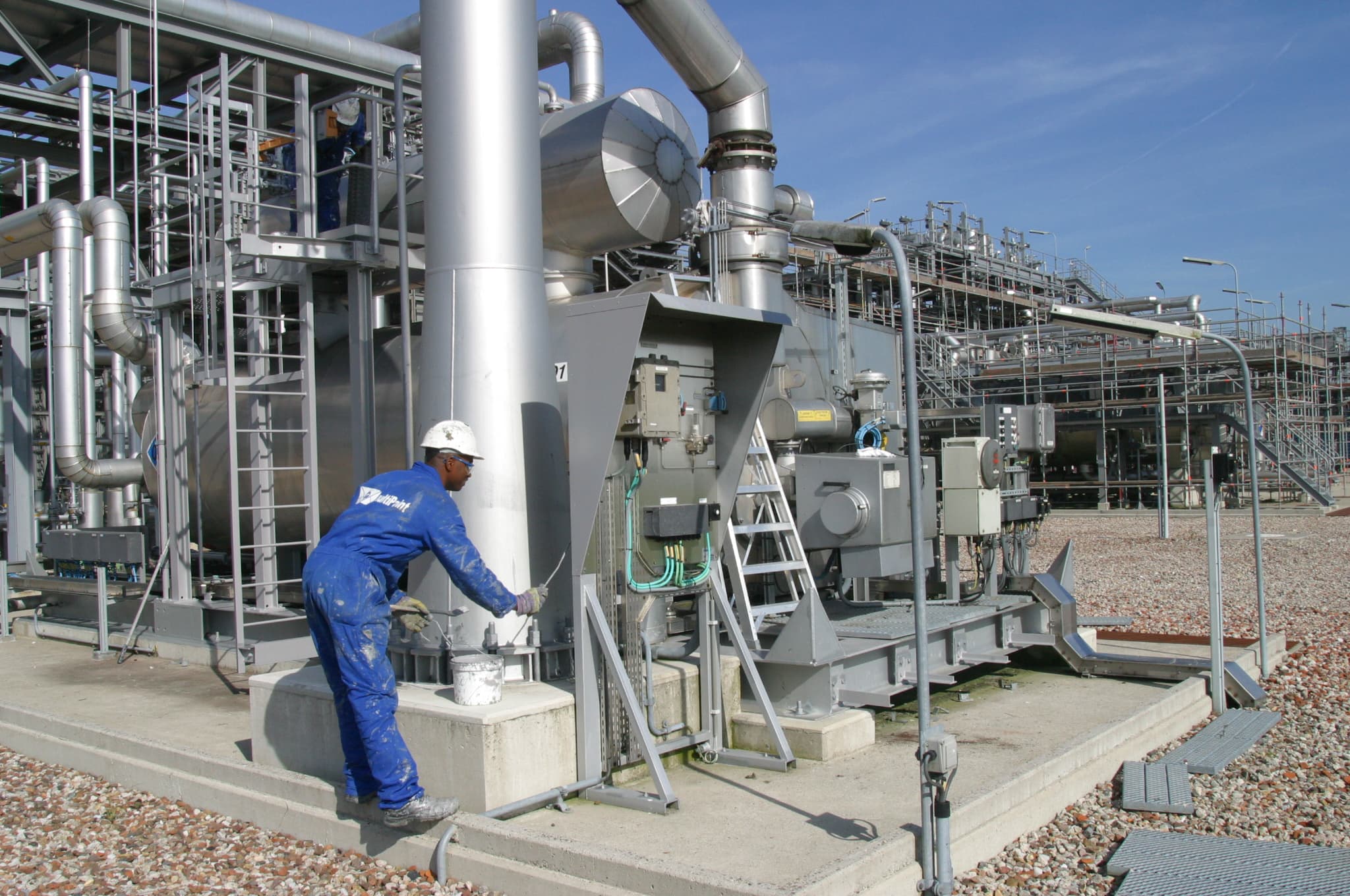A joint transition is a structure in the road surface that allows for the operation in the connection between the road surface and a structure (viaduct, bridge, culvert or flyover). Naturally, this transition must ensure that traffic safety remains in order.
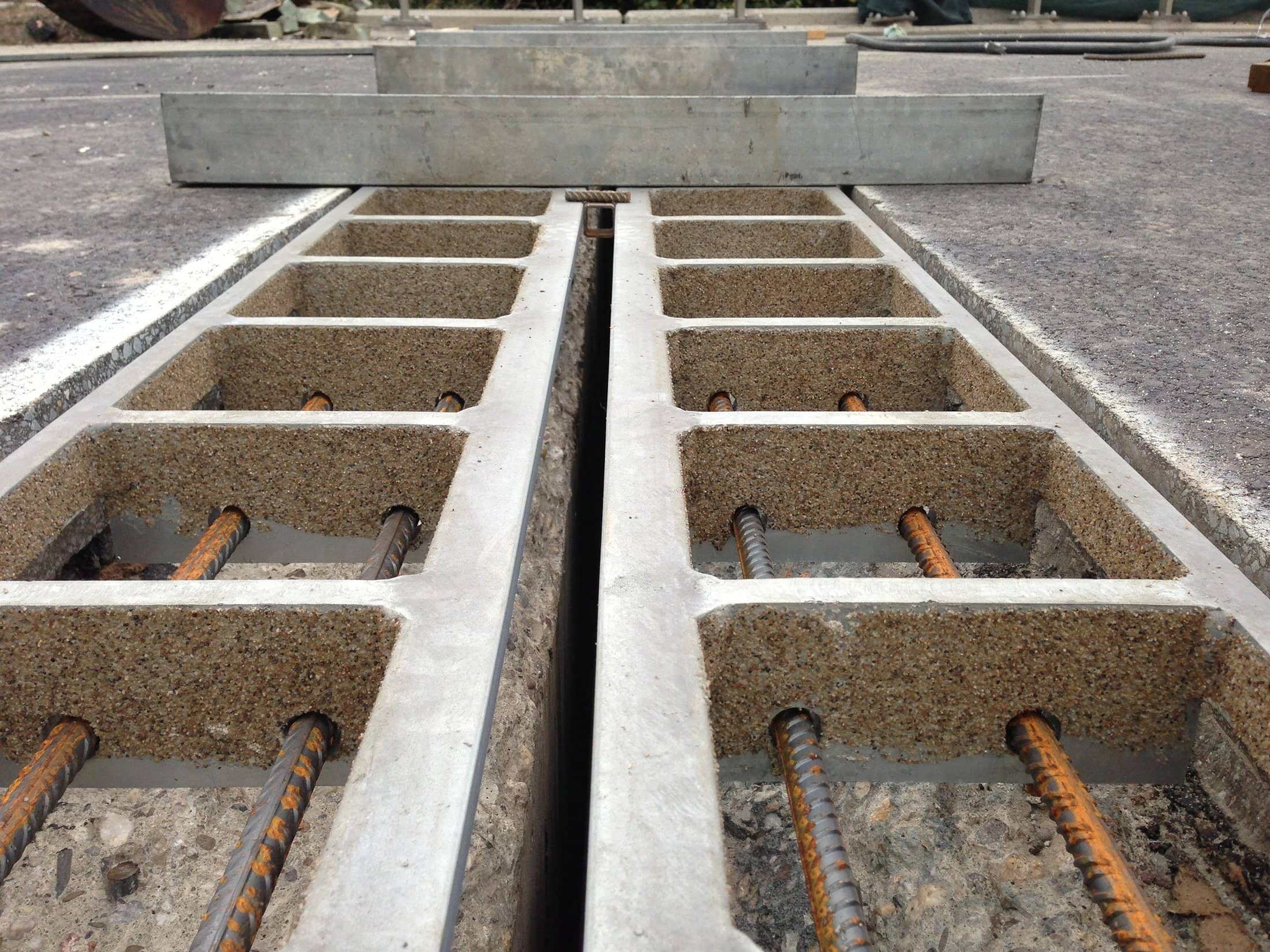
Joint transitions
Specific requirements
How does a structure function?
- Temperature differences can cause the structure to expand or contract.
- The age of the structure: shrinkage and creep in recently poured concrete structures.
- Load from traffic, such as axle loads, vibration, calamities, and the like.
The requirements set for expansion joints by clients are therefore very specific. Rijkswaterstaat has drawn up a building regulation that expansion joints must comply with. These requirements are included in the standard RTD 1007-3.
Below you can read more about the different types of expansion joints that exist. For more information, you can always contact us.
Single expansion joints
Single expansion joints can be used on motorways in traffic class 60. They are suitable for both new construction and the renovation of existing joints. The major advantage of this type of expansion joint is the relatively short installation time. By using an anthracite-colored, certified concrete mix that quickly achieves the required compressive strength, it is even possible to replace a section (up to 12 m) of an expansion joint overnight. That means less disruption for road users. In almost all cases, the joint structure can be replaced within a short time. Expansion movement can be accommodated for spans of up to 120 linear meters.
Bituminous expansion joints
Bituminous expansion joints are virtually low-noise. When installed to the correct dimensions, they can perform for 5 to 10 years under normal conditions. We expertly install bituminous expansion joints. The maximum span is 50 linear meters. If the deck rests on rubber bearing pads, we advise against this type of joint. The joint consists of carefully selected aggregate that is coated with bitumen in an asphalt mixer. This heated aggregate is transported to the worksite in a hotbox and placed in the joint recess. A joint plate is installed there to cover the gap between abutment and bridge deck, after which the recess is filled in layers. The placed, coated aggregate is fully saturated with a bituminous emulsion until the top of the asphalt layer is reached. It is then topped with wear-resistant chippings and rolled to create a smooth transition. In recent years, kilometers of this joint type have been installed throughout the Netherlands.
Single low-noise expansion joints
SealteQ can supply and install this expansion joint for you. Thanks to the special geometry of the joint teeth, it provides a comfortable crossing for vehicles. The design minimizes impact and pulse noise. This expansion joint is based on a modern single joint fitted with a rubber insert. It can also be used on motorways in traffic class 60, both in new construction and when renovating existing joints. A key advantage of this type is the relatively short installation time. That means less disruption for road users and the surroundings while still delivering a high-quality product. In almost all cases, a joint structure can be replaced quickly in this way.



